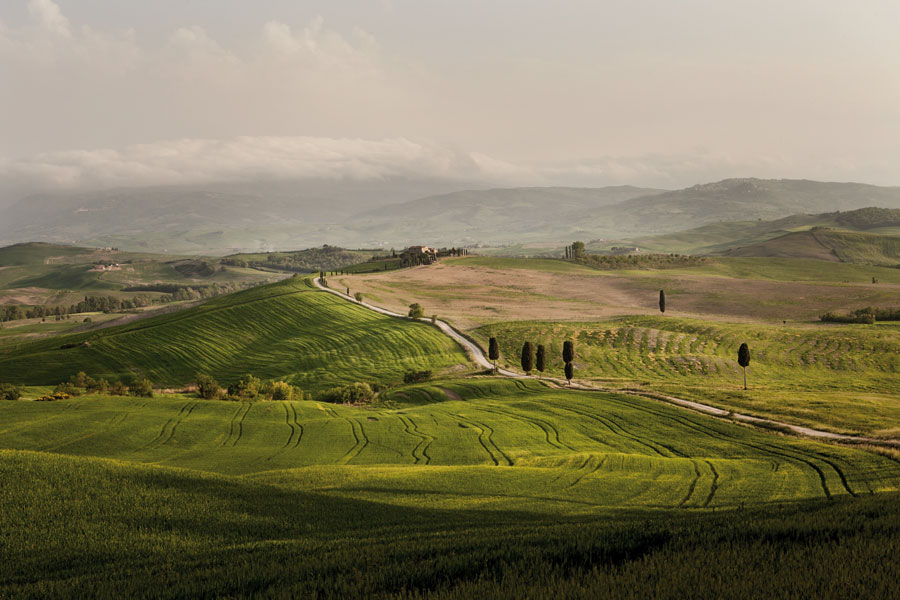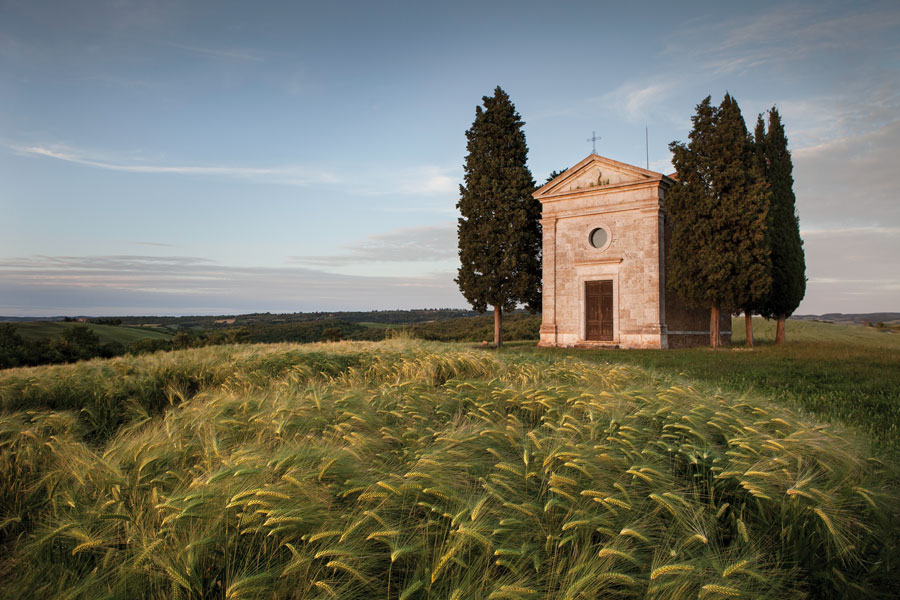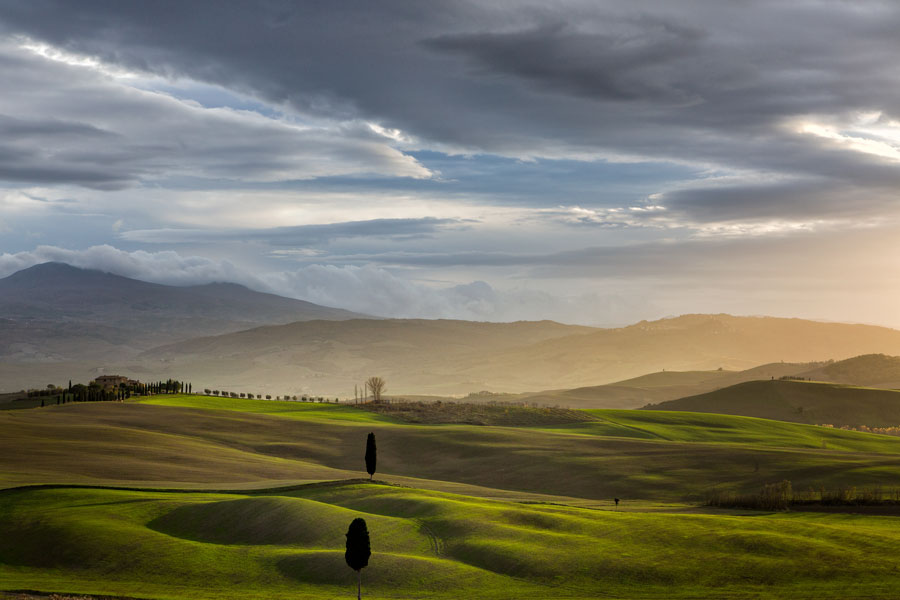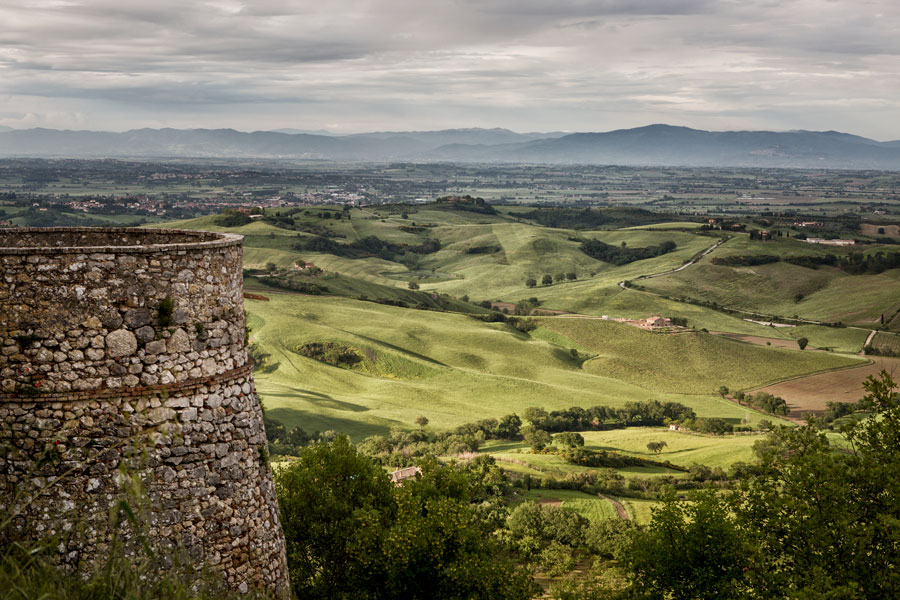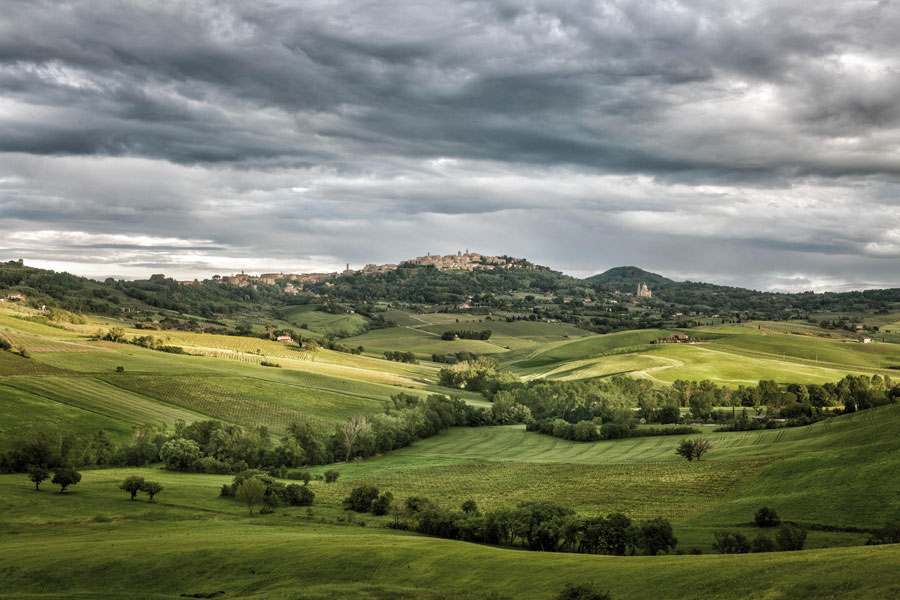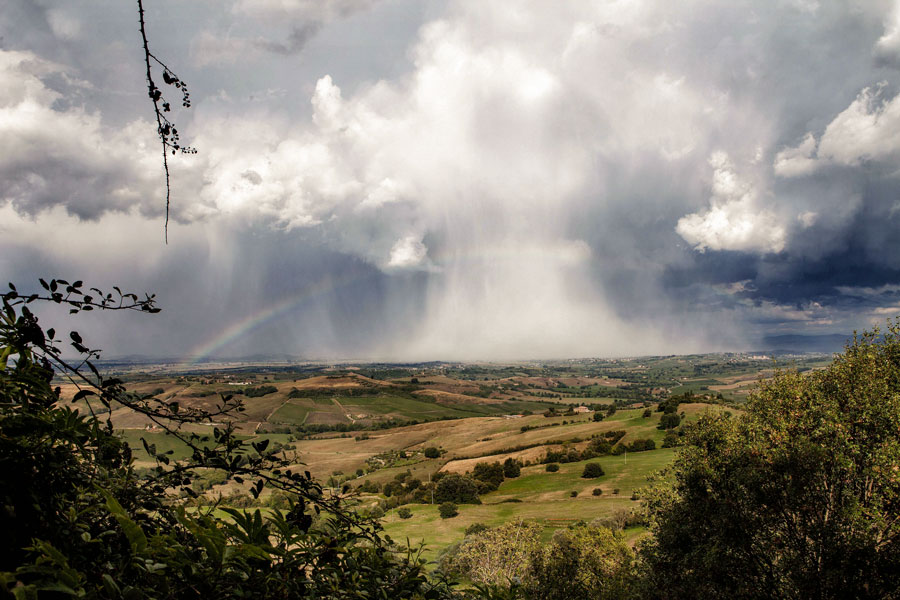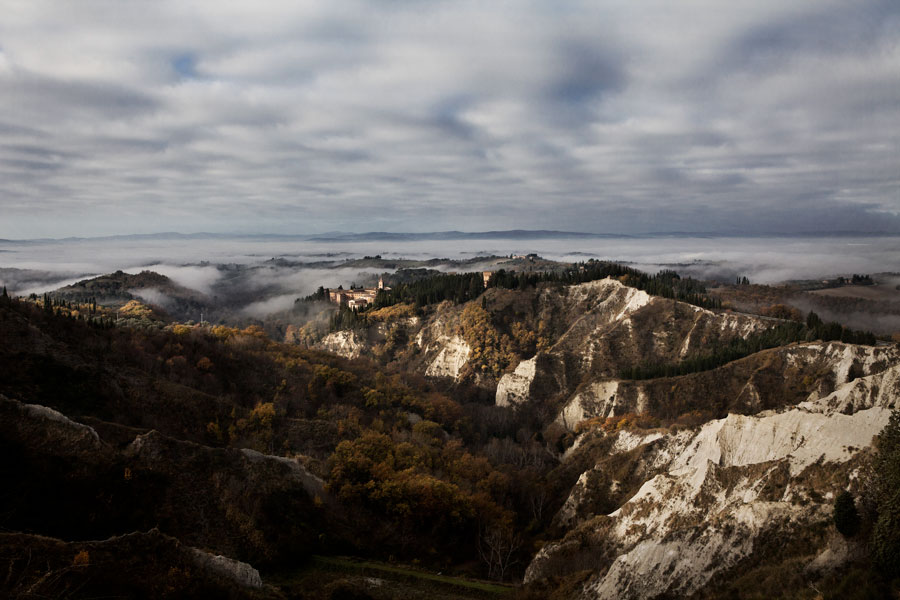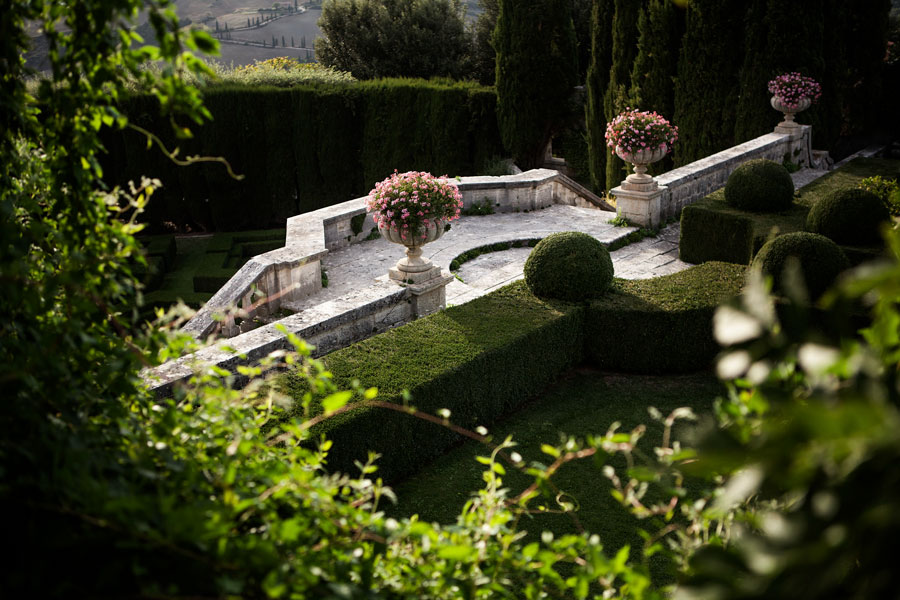The Artistic, Natural and Cultural park of the Val d’Orcia covers an extremely diverse area of about 18,000 hectares. To the East are the towns of Trequanda, Pienza and Montichiello, immersed amongst vividly coloured mosaics of fields alternated by patches of woodland sloping towards the famous hills of the area. To the South-West the view is dominated by Mount Amiata, an incredible volcano with its “Castiglioni” (fortresses) guarding the valley (Castiglion d’Orcia) which remind us how much this territory has been shaped by the hands of a poor and peasant tradition. Westwards you meet the lines of the vineyards which multiply progressively in the direction of Montalcino, interrupted only by impressive isolated trees. But the true protagonists of this land are the ravines, Crete and clay cliffs (biancane). They unfold along the river Orcia, characterizing an entire area and confirming its place in the European network for environmental protection Natura 2000. The area also has several thermal springs immersed in the colourful Mediterranean vegetation which can be easily reached on foot thanks to visible steam banks due to the activity of the nearby volcano.
The territory is dotted with settlements, situated on the “terraces” and “towers“ overlooking the valley, framing the landscape into a beautiful picture. Among these of particular interest are: Castiglione d’Orcia, Montalcino, Pienza, Radicofani and San Quirico d’Orcia. Most of the villages are fortified or simply religious or lay settlements developed around historical centres dating back to medieval or renaissance times. Pienza, San Quirico, Radicofani, Montalcino and Castiglione d’Orcia constitute a network of historical, artistic, architectural and environmental interest. A widespread distribution of cultural sites that contribute to making the Val d’Orcia a world heritage site.
The wine which gives taste and history to the valley
After a few glasses of wine, which will be offered to you by everybody, you will feel an even greater sense of belonging. In these lands in fact, the food and wine tradition reaches an unbeatable level of quality. This is proven by the amount of wineries and world-known labels scattered all over the territory. Starting from the famous Vino Nobile di Montepulciano and ending with the acclaimed international star, the Brunello di Montalcino.
It is interesting to discover also the less known red wines of the area, which with their perfumes and structure are turning the Consorzio Vino Orcia into an internationally appreciated brand. The most important wineries which contribute to making this wine famous are those that we will visit during our tours. We carefully select them according to their production methods, the use of local varieties and their environmental standards.


